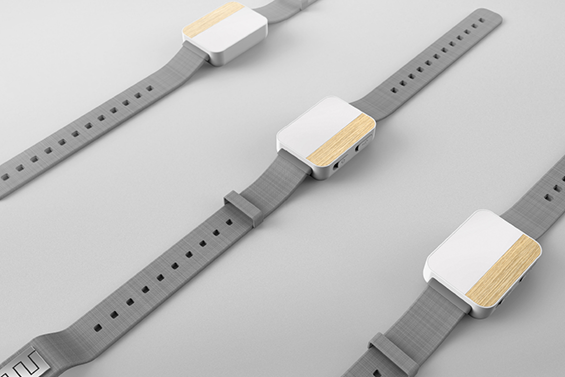
Javier Ortíz Álvarez-Cienfuegos and Manuel Sanchez Moronta, professors and researchers, work on designing electronic prototypes in the Electronic Technology Department of UPV/EHU.Their line of work is carried out in those areas where biology and electronics cross paths.
One of their latest projects originated from the Burmuin Institute, a medical centre that specialises in conditions of the brain and takes a holistic approach to treating its patients.This approach sometimes includes exercises and activities focused on relaxation.But monitoring progress in these types of activities is no easy task and it is for this reason that, within the institute, they have set up a centre called the Biofeedback Neurofeedback Basque Center.
The experts in this centre designed the specifications on which the UPV/EHU team based its work:they wanted a soft wristband with an attractive design, designed to monitor the emotional state of the patients participating in those relaxation activities.The sensor would make it possible to know how each patient is progressing with these techniques and allow the treatment to be altered based on the feedback received.
With this objective in mind, Javier’s team got to work on designing a prototype wristband that would register tonic variations in the galvanic skin response.When we experience strong emotional disturbances (fear, anger, anxiety etc.), the sweat glands dampen our skin, making it more conductive to electricity.This phenomenon can be measured by electrodes which are strategically placed on our skin.This is the same technology used by the polygraphs that regularly appear in American television series.
Furthermore, the wristband registers the heart rate and any changes to it, using a photosensor.It also has a Bluetooth communication system that sends the data that it collects to a Windows computer or a mobile phone with Android.The prototype’s hardware and firmware, and the respective applications (software) to use it, will be developed by Javier’s team, with the outside help of José Luis Malaina (PhD in Sciences, specialising in Applied Mathematics) to analyse the data collected from the wristband.The prototype will be tested by groups of volunteers during the design process.
Another company, Ideable, will be responsible for developing a set of games based on the relaxation exercises, for Android and iOS.The exterior design of the wristband, which you can see in the picture, is the work of the company Mormedi. In addition to all of the above, the device needs to be cheap to produce, so that it can be readily available with multiple sensors, for use with groups of people.
“Leaving aside the pay and recognition”, explains Javier, “participating in these types of knowledge transfer projects gives you the strength to explore and implement new technologies.Electronics are continually evolving, new products and platforms are emerging.The kinds of projects that we do with Euskoiker motivate you to update yours skills and learn new things”.
And his experience is also transferred to the classroom.Javier’s group has also supervised numerous final year dissertations in this field.Their students have prototyped electroencephalographs, electrooculographs, spirometers, electrocardiographs… and the most daring among them have produced the electronic designs for wearables, such as smart training shoes that study our steps to detect any problems.
Do you need an expert? Contact us
What is the benefit of contracting projects with companies?
¿Cómo puedo contratar proyectos con la Universidad?
Euskoiker has more than 30 years of experience managing all kinds of projects